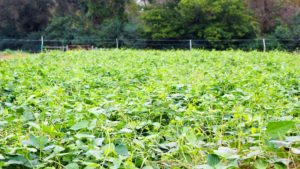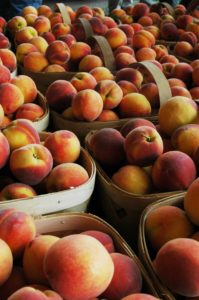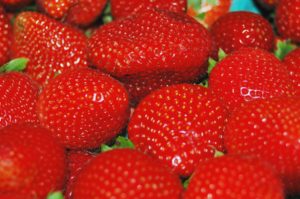
Cover Crops That Take the Heat
USDA NRCS & Plant Materials Program | 3/22/2019 Plant Materials Centers (PMCs) in the Southeast are gathering data on different …



El inglés es el idioma de control de esta página. En la medida en que haya algún conflicto entre la traducción al inglés y la traducción, el inglés prevalece.
Al hacer clic en el enlace de traducción se activa un servicio de traducción gratuito para convertir la página al español. Al igual que con cualquier traducción por Internet, la conversión no es sensible al contexto y puede que no traduzca el texto en su significado original. NC State Extension no garantiza la exactitud del texto traducido. Por favor, tenga en cuenta que algunas aplicaciones y/o servicios pueden no funcionar como se espera cuando se traducen.
Inglês é o idioma de controle desta página. Na medida que haja algum conflito entre o texto original em Inglês e a tradução, o Inglês prevalece.
Ao clicar no link de tradução, um serviço gratuito de tradução será ativado para converter a página para o Português. Como em qualquer tradução pela internet, a conversão não é sensivel ao contexto e pode não ocorrer a tradução para o significado orginal. O serviço de Extensão da Carolina do Norte (NC State Extension) não garante a exatidão do texto traduzido. Por favor, observe que algumas funções ou serviços podem não funcionar como esperado após a tradução.
English is the controlling language of this page. To the extent there is any conflict between the English text and the translation, English controls.
Clicking on the translation link activates a free translation service to convert the page to Spanish. As with any Internet translation, the conversion is not context-sensitive and may not translate the text to its original meaning. NC State Extension does not guarantee the accuracy of the translated text. Please note that some applications and/or services may not function as expected when translated.
Collapse ▲
USDA NRCS & Plant Materials Program | 3/22/2019 Plant Materials Centers (PMCs) in the Southeast are gathering data on different …

Jan Suszkiw | 3/17/2019 | USDA ARS via Morning AgClips Diverse bee communities best for apple orchards WASHINGTON — Honey bees …

Kari A. Peter | Penn State University Below is an excerpt from Kari A. Peter at Penn State article on …

Michigan State University | Nathan Haan and Douglas Landis You might think that mowing fields wouldn’t benefit monarch butterfly populations. …

Inga Meadows, Amanda Scherer, and Michelle Henson | NC State University Bacterial spot is caused by four species of Xanthomonas and occurs …

Travis Gannon | 3/4/2019 | SportsTurf Online While there is currently much scrutiny around pesticides and their use, synthetic pesticides …

Taryn Phaneuf | 2/26/2019 | Minneinno via HortDaily On a farm in Faribault, Minnesota, set indoors and covering 60,000 square …
Eric Prostko | 2/20/2019 | Southeast FarmPress I think I can safely say after more than 27 years of professional experience, obtained …

Jayesh Samtani & Curt Rom | HortTechnology via Morning Ag Clips VIRGINIA BEACH, Va. — A comprehensive review led by …
Logan Haake | 2/8/2019 | Ohio Farmer/Farm Progress Soybean weed-management for 2019 should be based around three principles: Start clean, …
Bayer Crop Science | 2016 From the Cities and into the Skies : The Rise of the Vertical Farm As urban …

Lina Quesada-Ocampo and Inga Meadows | NC State University Tomato late blight is caused by the oomycete pathogen Phytophthora infestans (P. infestans). …

Inga Meadows, Amanda Scherer, and Michelle Henson | NC State University Southern blight, also known as southern wilt and …

Dave Ritchie, Jim Walgenbach, and Wayne Mitchem | 8/13/2024 | NC State University North Carolina ranks 7th in the nation …
Root knot nematode of soybean is caused by plant parasitic nematodes belonging to the genus Meloidogyne. Several species are known …

USDA ARS & University of Maryland | 1/30/2019 | Via Morning Ag Clips Research by scientists at the Agricultural Research …
NC State University | Zach Devries, Coby Schal, Mick Kulikowski Total release foggers, commonly known as “bug bombs,” are …

iPiPE is a set of online tools, information products, and expert commentary for the detection and management of pests …

Dr. Danesha Seth Carley and Dr. Terri Billeisen | 1/13/2019 | Turfgrass Council of North Carolina Available as Podcast: PLAY IN …

This factsheet summarizes the characteristics of bees and addresses how to control them as an …

This publication discusses Anthracnose Fruit Rot (Colletotrichum sp.) of blueberries in detail. Included are the …

This factsheet describes the symptoms of a shoot inhibitor herbicide injury.

This factsheet describes the symptoms of a metribuzin herbicide injury.

This factsheet describes the symptoms of a dichlobenil herbicide injury.

This factsheet describes the symptoms of a protoporphyrinogen oxidase inhibitor herbicide injury.
This factsheet summarizes the symptoms and management of stubby-root nematodes in soybean in North Carolina.
Lance nematode is not a common problem of soybeans, but can cause local damages in …